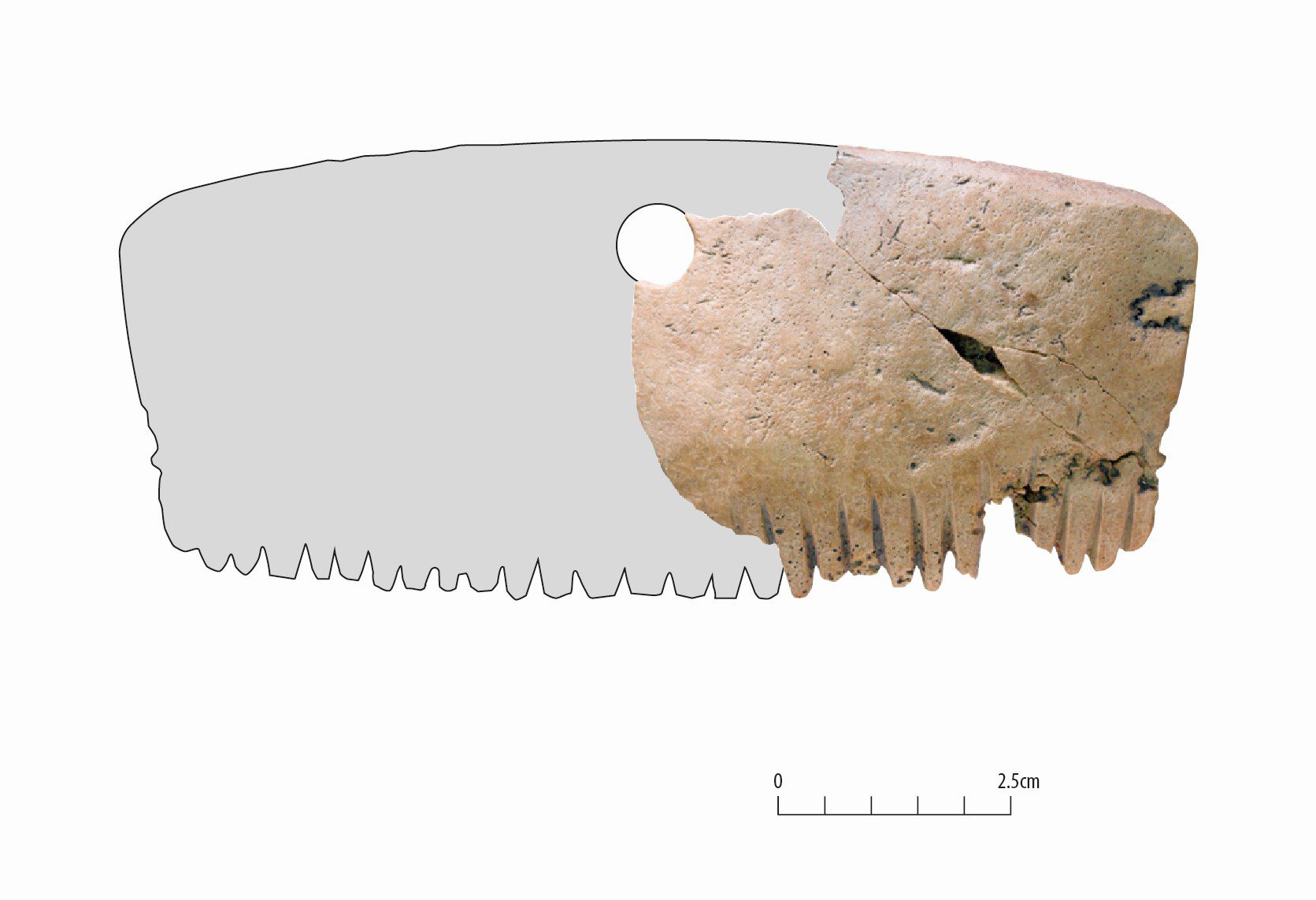A routine archaeological excavation in Cambridgeshire, England, has uncovered a particularly gruesome and rare discovery: a comb carved from the bone of a human skull.
One of only three such examples ever discovered in the country, the “startling” find has archaeologists rethinking Iron Age community rituals in Cambridgeshire, England.
While you might think something identified as a “comb” would have a pretty obvious use, the team at the Museum of London Archaeology (MOLA), who are carrying out the analysis of the more than 280,000 artifacts already recovered from the excavation at Bar Hill, Cambridgeshire, say the exact purpose of the item can only be theorized.
There is no wear on the teeth of the comb, indicating that it was probably never used for styling hair or textile work. Instead, MOLA’s Finds Team Lead Michael Marshall points to a circular hole drilled into the center top of the item, suggesting it may have been worn as an amulet.
Reconstruction of Bar Hill Comb. Image credit: © MOLA
Such a conclusion would tie in well with what we know about Iron Age communities in the area. Although human bone combs are virtually unheard of, the re-use of human bone more generally is well-documented – often being used in special rituals relating to the dead.
“The Bar Hill Comb may have been a highly symbolic and powerful object for members of the local community,” Marshall explained in a statement seen by IFLScience. “It is possible it was carved from the skull of an important member of Iron Age society, whose presence was in some way preserved and commemorated through their bones.”
Illustration showing the area of the skull the Bar Hill Comb was carved from. Image credit: ©MOLA
For these ancient peoples, the skull was a particularly significant part of the human body: archaeological evidence has been found across Europe showing their collection, reuse, and display in Iron Age communities. Nevertheless, only two other human skull combs have previously been discovered – and remarkably, both were found within 24 kilometers (15 miles) of Bar Hill.
“It is possible this fascinating find represents a tradition carried out by Iron Age communities living solely in this area of Cambridgeshire,” Marshall said. “To be able to see such hyper-local influences in groups of people living over 2,000 years ago is truly astonishing.”
And yet, despite being found in such close proximity to each other, the three skull combs show some important differences in their creation. Through their idiosyncrasies in design and construction, Marshall theorizes that the combs were highly symbolic, representing the natural structure of the human skull itself. “[The] carved teeth and lines would have emphasized the Bar Hill Comb’s origin,” he explained, “at least amongst communities familiar with skeletal remains – as many in the Iron Age would have been.”
“Rather than being an anonymous piece of bone, its symbolism and significance would therefore have been immediately apparent to anyone who encountered it,” he said.
Michael Marshall examines the Bar Hill Comb. Image credit: ©MOLA
As excavations in the area continue, the Bar Hill Comb will now be moved to the Cambridgeshire Archaeology Archive, the main repository for archaeological material found in the county. While the comb’s true function and context may never be known, its discovery nevertheless offers a glimpse into the rituals and beliefs of times two millennia past.
“This is a further example of the spectacular results from the excavations,” Archaeology Lead for the local excavation project, Steve Sherlock, concluded. “[It] add[s] detail and insight into our understanding of the human activity across Cambridgeshire and beyond.”
Source Link: Comb Carved From Human Skull Reveals Ancient And Super Rare Tradition In UK
